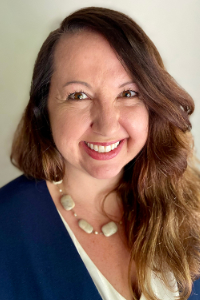Women in Medicine Month: An Osteopathic Medical Education Perspective
Published September 17, 2024
Inside OME
 By Tami Hendriksz, DO, dean, Touro University California College of Osteopathic Medicine
By Tami Hendriksz, DO, dean, Touro University California College of Osteopathic Medicine
Every September, the medical community comes together to celebrate Women in Medicine Month—a time to reflect on the invaluable contributions women have made to healthcare, recognize the challenges they continue to face and look ahead toward building a more inclusive, equitable future in medicine. As someone deeply embedded in osteopathic medical education, this month carries a particular significance. It is a reminder of our profession’s foundational belief in comprehensive care, which extends to fostering a medical community where diversity thrives, and everyone has the opportunity to contribute their unique talents to patient care.
A Growing Force in Medicine
Women have been a part of the osteopathic profession since its early days. While they were initially a minority, today women represent a significant and growing portion of students in osteopathic medical schools. In fact, across many medical schools—Touro University California College of Osteopathic Medicine (TUCOM) included—female students now make up more than 50 percent of incoming classes. This shift is not just a matter of numbers but a reflection of the broader evolution in healthcare. As we train the next generation of physicians, it is important to acknowledge the transformative power of women in shaping medicine.
Women have brought new perspectives, driven patient-centered care models and have often been the trailblazers in advocating for healthcare access, gender-specific health research and addressing healthcare disparities. From pioneering roles in medical education, research and leadership positions, women in osteopathic medicine have led with empathy, resilience and vision. But, while these achievements are notable, there are still many barriers and challenges that female physicians and medical students face.
Challenges Women Still Face in Medicine
Even with these strides, women in medicine must often overcome significant obstacles. Gender bias remains a persistent issue, from pay disparities to unequal representation in leadership roles. Studies show that female physicians are still less likely to be promoted to senior positions and often experience discrimination, microaggressions or assumptions about their ability to balance family life and career demands.
The pressures that come with these barriers are compounded by the unique challenges women face in medicine, particularly in male-dominated specialties such as surgery, orthopedics and even fields like osteopathic manipulative medicine. Many female osteopathic physicians in these areas have reported feeling the need to “prove” their competency more than their male counterparts. Despite the equal training and rigorous standards that all DOs must meet, the perception persists in some circles that these specialties are still viewed through a gendered lens.
These challenges highlight the need for ongoing structural and cultural changes in both osteopathic and allopathic medical education and practice. We must ensure that the field of osteopathic medicine, with its emphasis on whole-person care and wellness, creates environments where female students and physicians can thrive without having to navigate unnecessary obstacles.
The Role of Osteopathic Medical Education
As educators, we play a critical role in fostering a culture that embraces and empowers women in medicine. At TUCOM, we are committed to ensuring that all our students—regardless of gender—receive the support and resources they need to succeed. This means developing mentorship programs where female faculty can guide students through the challenges they may encounter. It also means ensuring that the curriculum highlights the contributions of women in osteopathic medicine and teaches our students to recognize and confront gender and other biases in healthcare.
One of the key aspects of osteopathic education is the focus on empathy and the patient-physician relationship. Female osteopathic physicians often excel in this area, bringing a comprehensive approach to patient care that aligns perfectly with osteopathic medicine’s core principles. By integrating this patient-centered focus with a strong commitment to diversity and inclusion, we can help ensure that women in osteopathic medicine are prepared to lead the charge in shaping the future of healthcare.
Looking Forward
Women in Medicine Month provides an opportunity not just for celebration but for reflection. As we honor the women who have shaped and continue to shape the medical profession, we must also take stock of the work that remains to be done. The future of osteopathic medicine, like all fields of medicine, will be stronger when it is more inclusive. We have a responsibility to ensure that women not only enter the field of osteopathic medicine in greater numbers but that they are supported, empowered and given the same opportunities to lead, innovate and transform healthcare.
At TUCOM, and in osteopathic medicine more broadly, we are committed to this vision. By fostering an environment where women in medicine can flourish, we help build a healthcare system that reflects the diversity, strength and compassion of the communities we serve. As we celebrate Women in Medicine Month, let us continue to push forward, creating a future where gender is no longer a barrier to success in medicine, and where women are recognized for their invaluable contributions to the health and well-being of society.
